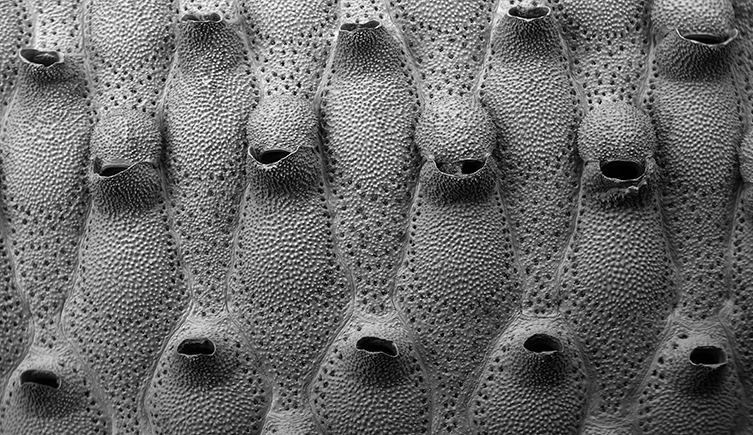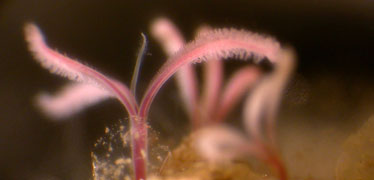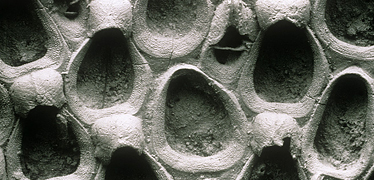Bryozoans and environment

The Antarctic bryozoan, Lageneschara lyrulata. This scanning electron micrograph shows the calcium carbonate skeleton of a portion of a colony.
Project summary
- Focus: investigating the potential impacts of marine environmental change and eutrophication on bryozoans
We are investigating the potential impacts of ocean acidification and eutrophication on bryozoans.
Marine bryozoans are comprised of zooids with calcium carbonate skeletons. Somezooids are modified for reproduction, others for defence and the majority for feeding.
The calcium carbonate skeletons of the individual zooids within a colony provide a record of how colonies invest in these different functions, and whether their skeletal integrity is altered by environmental change.
We focus on two areas:
Marine environmental change
- We use present-day and historical marine bryozoans to examine how environmental change in space and time may influence skeletal integrity and investment in different vital functions through zooid types.
- We use this framework to investigate the impacts of ocean acidification, temperature and seasonal regimes.
Eutrophication
- Extra additions of nutrients to bodies of water can affect local community structure.
- We are analysing the remains of bryozoans in sediment cores to investigate community structure in freshwater environments in time and space as a response to nutrient influxes.
Museum staff
Collaborators
- Dr Paul Taylor
The Natural History Museum - Dr Daniela Schmidt
University of Bristol - Dr Jorge Salgado
University College London - Dr Carl Sayer
University College London
Supported by



Sustainability
We are exploring new sources of food, predicting the spread of disease and finding scarce elements

Invertebrate research
Our scientists are investigating the taxonomy, systematics and biodiversity of groups of invertebrates

Fossil bryozoan collection
The Museum holds the best collection of fossil bryozoans in the world, with over 5,000 type and figured specimens